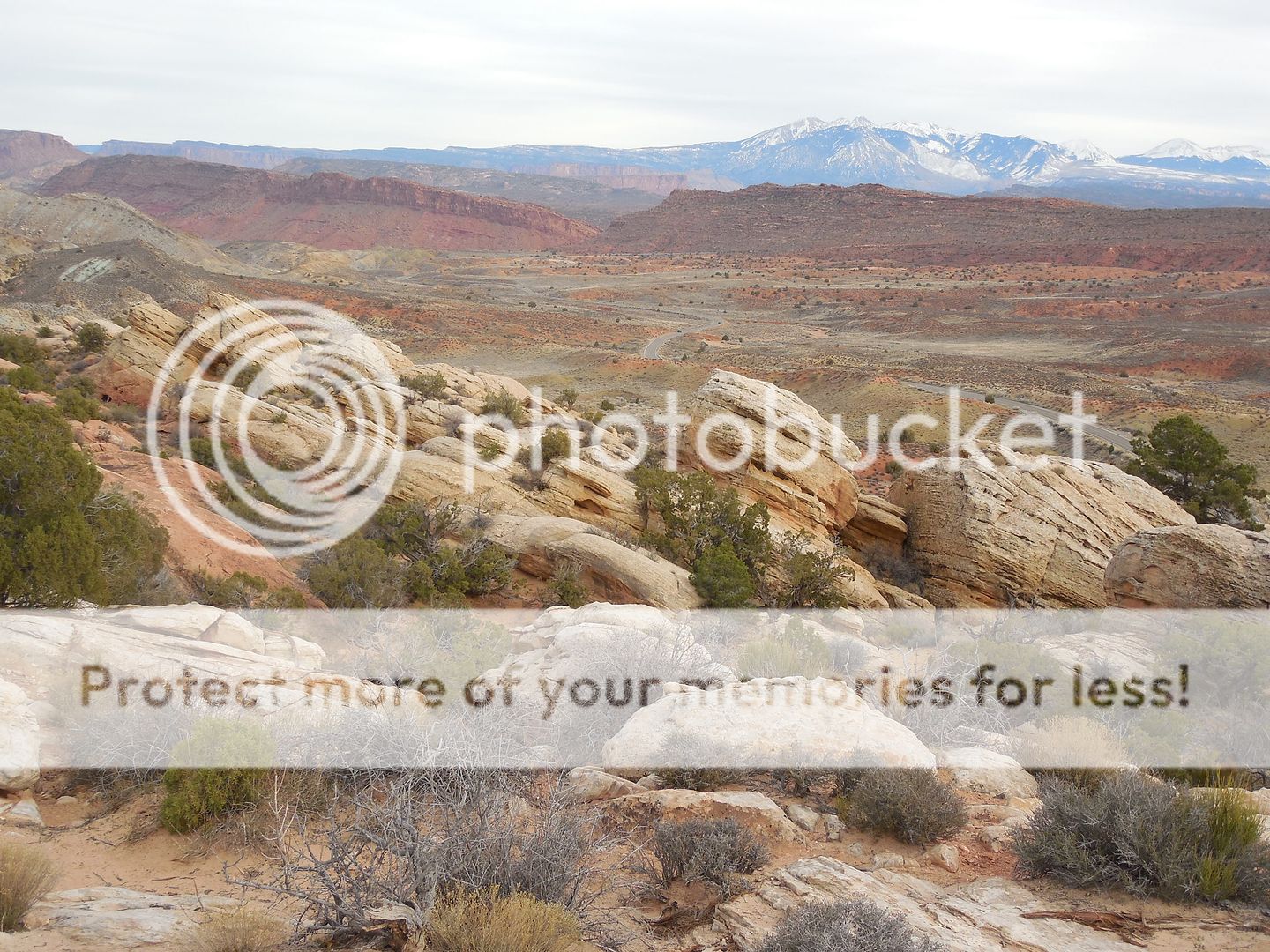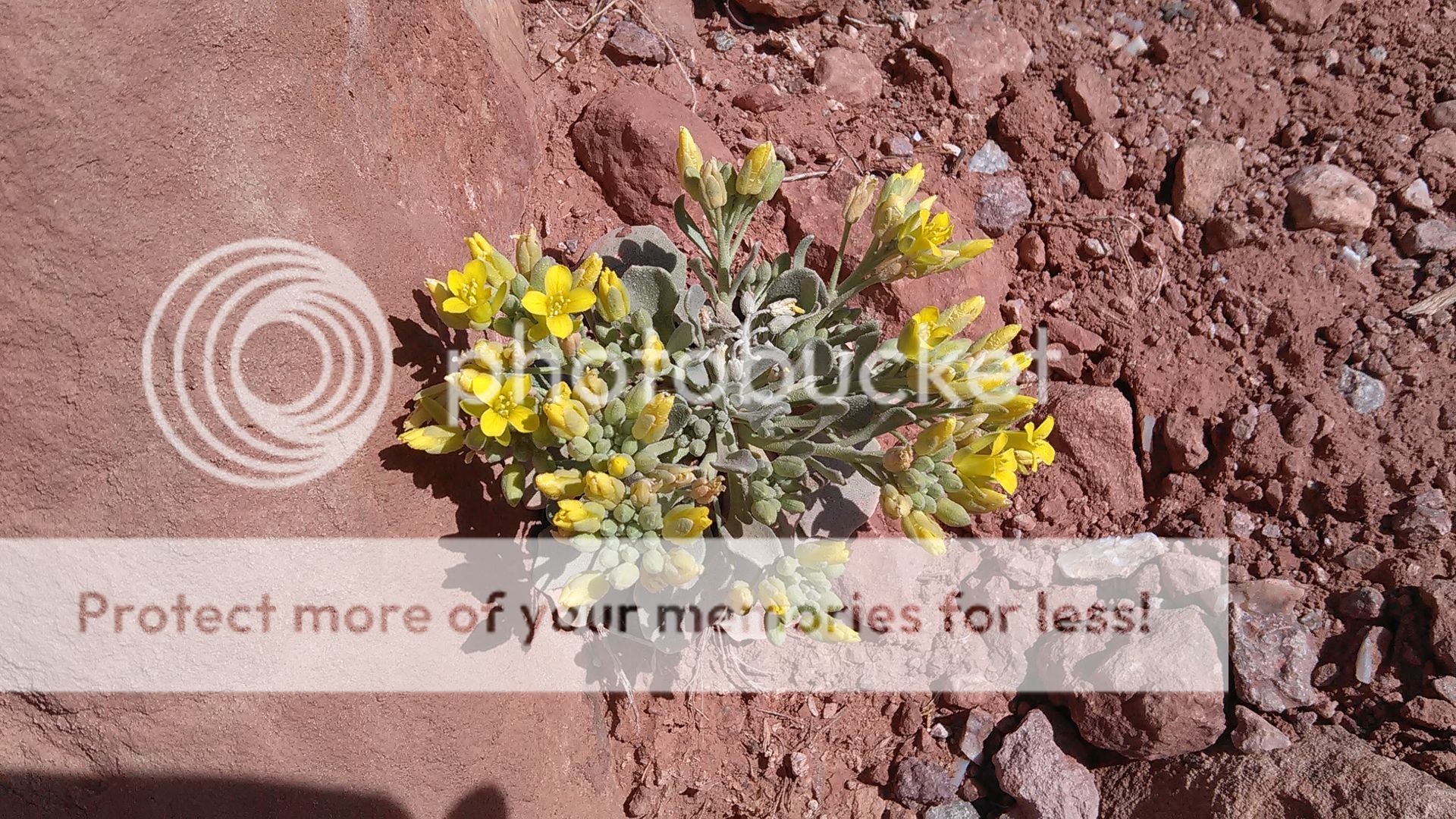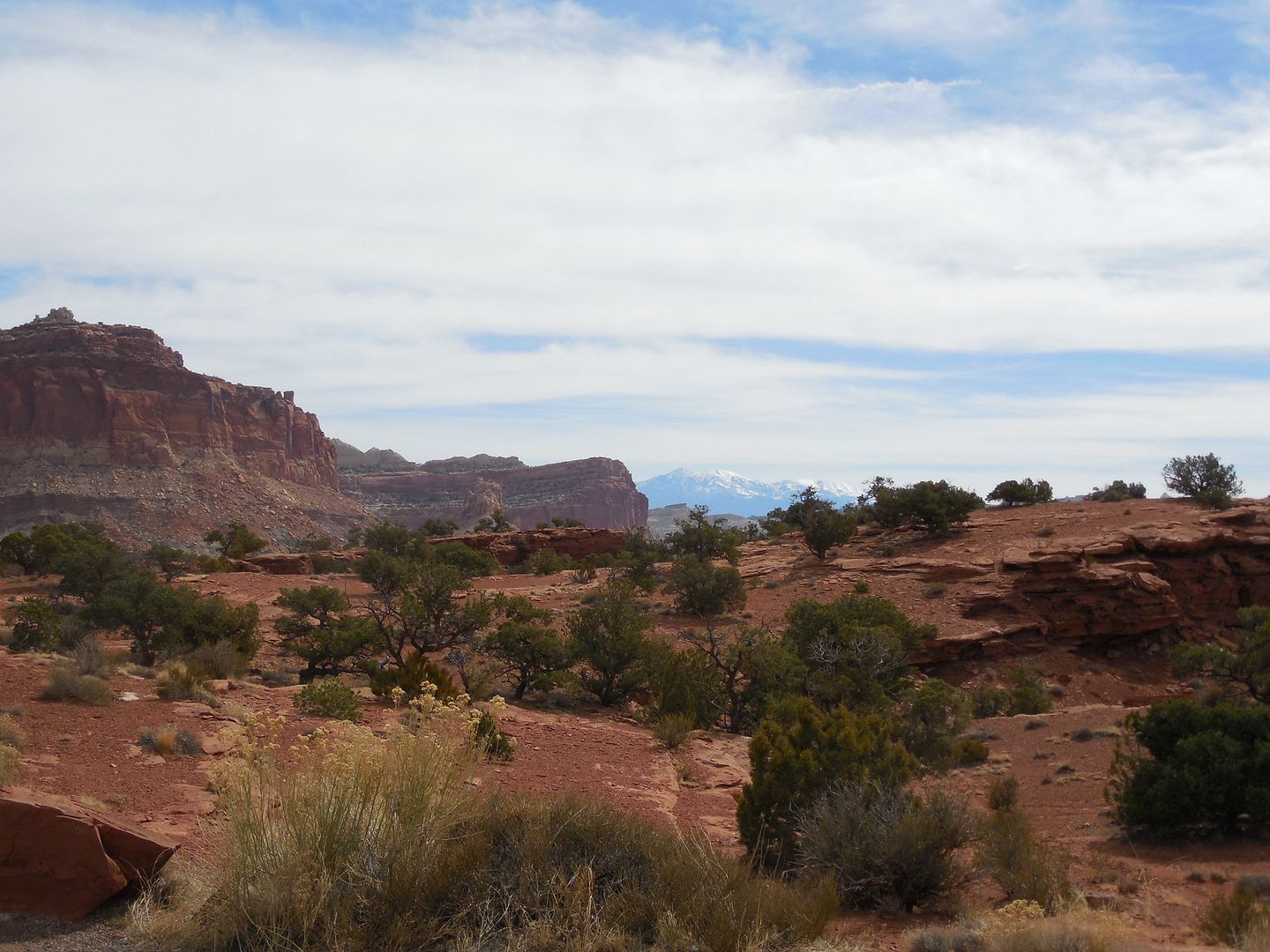Arches has the highest concentration of natural rock arches anywhere in the world- over 2000 of them. The area was a sea 300 million years ago, and successive cycles of drying and inundation deposited a layer of salt that is thousands of feet thick in places. Sediment deposited on top of it was compressed and and became layers of sandstone. The weight of the rock forced the salt to flow, and raise up layers of rocks in salt domes. The layers cracked and subsided, leaving long fins of rock. After years of erosion, the fins became separated and softer layers collapsed underneath leaving freestanding arches of harder material above. It's a process that is ongoing, as new arches grow and the oldest ones collapse.
In between the arches and rock formations, the desert stretched out, stark and beautiful.
It was important to stay on the trails, because the life in the desert may withstand heat, cold and lack of water, but not people trampling it. Particularly vulnerable is the 'biological soil crust'- a collection of algae, moss, bacteria, lichen and fungi that collect on the surface, trapping moisture and making soil that other plants can then use for nutrients.
As in other parks, the colors were fabulous.
We were very struck by slabs of an odd greenish rock we couldn't identify. A ranger told us later that the rock was chert and the green color was unreduced iron. (Oxidized iron is what gives us red rock- I hadn't realized that that unoxidized iron would color rock green.)
Everwhere we looked, we saw fantastically shaped rock.
Or fantastically shaped wood.
We saw all the 'major' sites- such as Balanced Rock:
But even the smallest details were eyecatching. The trail called Park Avenue is a dry riverbed, and the water has cut and swirled the rock, exposing striking strata.
We spent all afternoon, had dinner in Moab, and returned the next day for more. In the morning my camera batteries died, so I took photos with my phone until lunch when we went back to town and I could get more batteries.
Despite the difficult conditions, plants managed to survive. This little clump of flowers was growing in the middle of the trail.
Of all the parks we visited, Arches was my favorite, but not because of the arches- it was just something about the vistas, the openness, the colors and the shape of the scenery.
We returned to town reluctantly and sought out dinner. The next day would be our last day in Utah.
The Arches slideshow:












Isn't it AMAZING how resilient plants can be? I've been amazed where I have seen things growing that seemed simply impossible.
ReplyDeleteYour photos are beautiful (as always).